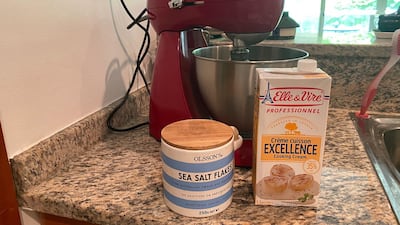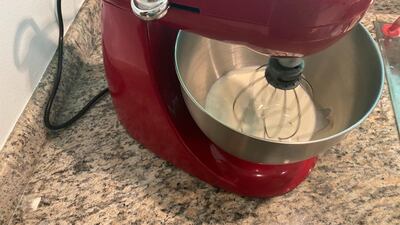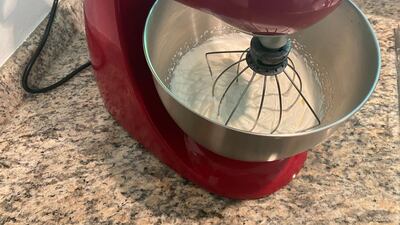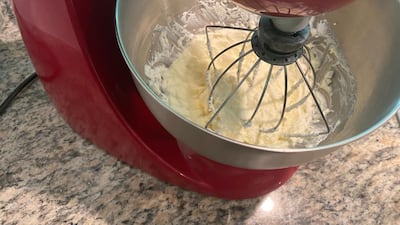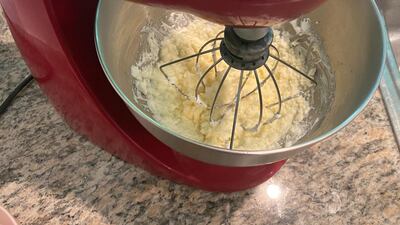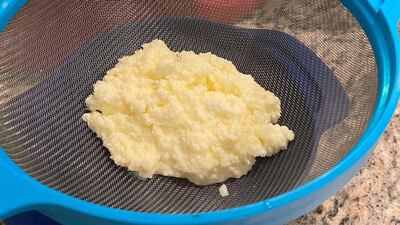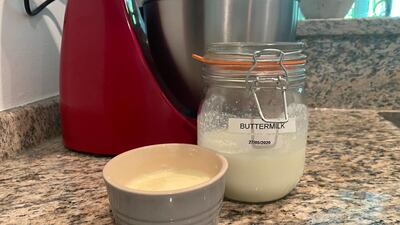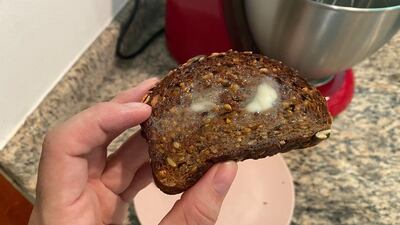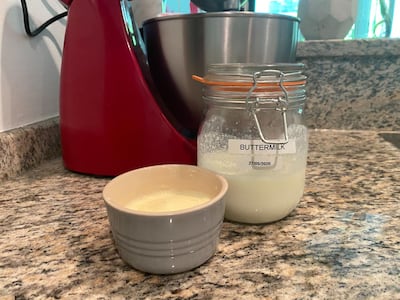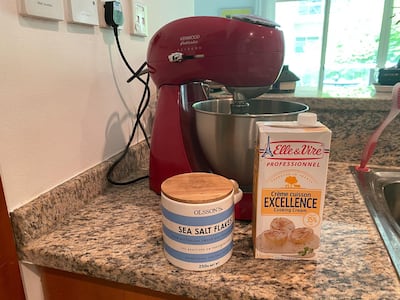A couple of days ago, a friend of mine messaged me to tell me he had started making his own butter.
I dismissed it as a very complicated process, and images of him sat in his garden with an old fashioned churner came to mind.
I was wrong. All you need is some heavy cream, a whisk (ideally electric), some iced water and about 15 free minutes, which most of us have at the moment. Et voila, butter.
I had no idea that butter is essentially just over-whipped cream (which I'm sure will make my mum tut and then ask if I actually know anything about food). But hey, every day is, as they say, a school day.
What do you need to make butter?
The list of equipment is almost as short as the ingredients list. You will need:
- A whisk. Note: I used a stand mixer, which I appreciate will have made it easier, but an electric hand whisk or standard whisk and a lot of elbow grease will get the job done
- A sieve
- Two bowls
- A spatula or wooden spoon
- A jug of iced water
The ingredients you need are simply:
- Heavy cream (the higher the fat content, the better the butter)
- Salt (optional and to taste)
- Anything else you want to flavour your butter with
- And, of course, as above, the iced water
Method:
- Pour 300ml of heavy cream into a mixing bowl, and begin mixing. Start on low and gradually work your way up in speed if your mixer has the option to.
- Add the desired amount of salt – this is entirely to taste and depends if you want to use your butter to bake, or not. I added about 1 tsp for a noticeably salty taste.
- Keep whisking at a high speed, I left my cream mixing for 12 minutes. It went from looking like thick whipped cream to a collapsed whipped cream to separated scrambled eggs. When it's at the latter stage, with distinct solids and a liquid, you can stop.
- Spoon the contents of your mixing bowl into a sieve over a bowl. You will notice that a liquid separates out into the bowl, that is buttermilk, put it to one side (it's worth keeping). In the sieve you will be left with your solid butter.
- When you're satisfied that all of the buttermilk is out, move the sieve full of butter onto a second bowl and pour iced water over it to rinse and ensure absolutely all of the buttermilk is gone. You can do this by hand, by squeezing the butter (which will be easy to ball up at this stage), or by pressing it down with a wooden spoon or spatula.
- When all of the liquid is gone, you are done. Transfer the butter to a small dish to keep it in, the butter will store in your fridge for up to six weeks.
The 300ml of cream I used produced 125g of fresh butter.
What is buttermilk?
Arguably, the best part of this entire process is the buttermilk by-product, as it can be quite hard to get your hands on in UAE supermarkets. So be sure to sieve your freshly churned butter over a bowl and get every last millilitre of buttermilk you can.
Buttermilk is a fermented dairy product, the liquid left behind after churning butter out of cultured cream. It is a low-fat, tart, acidic product, which makes it a great cooking ingredient.
The acid tenderises meat, which is why it is often called for in fried or roasted chicken recipes. It also works to kick-start baking soda, which makes it great in pancake and soda bread recipes, resulting in a well-risen and light finished product. The sour taste also lends itself well to creamy sauces and salad dressings, or fruit smoothies.
Now, if you need me, I will be splitting my time between making unnecessary slices of toast, dreaming up creative butter flavours and making batches of buttermilk pancakes or fried chicken.
